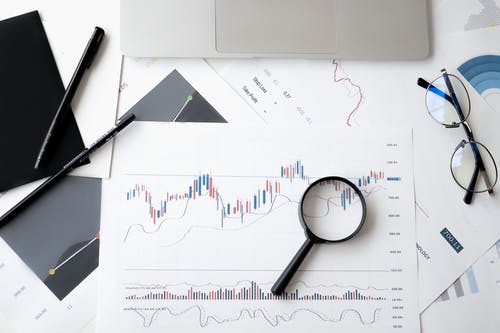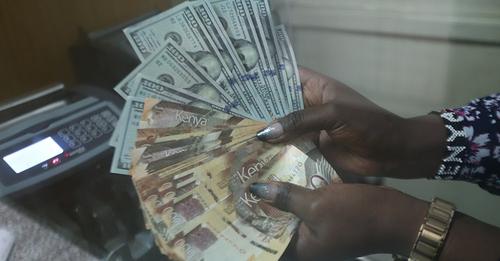The foreign exchange market ranks among the most accessible day trading markets globally because it has one of the lowest barriers to entry.
To start day trading, an internet connection, a personal computer and a few hundred dollars are all you need.
However, this low barrier to entry is not a guarantee for overnight riches. Before you make your first move, spare a few minutes to consider these ten grave mistakes traders make that may stand on your way to success
1. Choosing the wrong broker
Ideally, your first and most significant trade involves depositing cash with a forex broker. Therefore, if it is managed poorly or the broker is in financial trouble, you may lose your money.
You could end up with similar results if the brokerage firm is engaged in a trading scam.
That is why you need to be well advised before choosing a broker.
Here are some valuable tips to consider;
- Reflect on what you want to accomplish
- Know what a broker offers
- Use trustworthy sources for broker referrals
- Establish whether they are regulated and fully compliant?
- At first test the broker using small trades
2. Trading without a plan
While writing a trading plan, you need to outline a strategy that defines what markets you will trade, how you will trade and when you will trade.
You also have to set the approximate time frame to analyze and make trades.
Include risk management rules in your plan outlining specifically how you would enter and exit trades.
Remember, operating without a plan is taking a gamble that may cost you dearly. Therefore, create the document and use a demo account to test it for profitability.
Planning and implementing anything takes discipline, skill and great patience. As you delve deeper into day trading, you need to pause and adjust your plan accordingly.
If you are in trading for the long term, you will realize the need and benefits of implementing new strategies at different times.
3. Revenge trading
You may be wondering, so, what is revenge trading? This is a rash and emotional response exhibited by a trader after suffering a significant loss.
The lingering shame, anger, fear and greed generates the wild anxiety to recover from the loss without delay.
Usually, the person rushes to enter another trade before thinking about their next move critically and strategically.
Unfortunately, there are no guarantees for immediate recovery from such losses since the markets are volatile and unpredictable.
Most people who resort to revenge trading have been on a smooth run until a big loss interrupts them.
Sometimes, revenge trading causes people to suffer bigger losses than what they are trying to recoup.
4. Trading without a stop loss order
It is crucial to create a stop-loss order for any of your forex or stock trades.
But, first, what is a stop-loss order?
Well, this is an order you place directing your broker to sell a stock once it reaches a specified price.
A stop-loss serves to limit a trader’s loss if a trade goes against them by a specified amount. For example, if you set a stop-loss order for 15% below your buying price, your loss will be limited to that percentage.
In simpler terms, if you bought Tesla stocks at $ 1,025 per share and immediately entered a stop-loss order for $871.25, your shares will be sold if the stock tumbles below $871.25
A stop-loss order serves to protect you from losing more than you can handle
5. Adding to a losing day trade
Have you ever heard or read about averaging down? It means adding to your position as the price slides against you, in the false optimism that the trend will turn around soon.
The hope for the trend reversal is mistaken because the downward spiral may run for much longer than you thought, hence increasing your loss.
Instead, it would be best to settle for a trade with the proper position size and then mark a stop loss on it. This way, the trade will auto close once the price hits the stop loss.
Marking a stop loss sees you lose less money than you would through averaging down
6. Not keeping records
Keeping a detailed and consistent record of your trades is critical to your success in this space. Ensure to record each trade, loss and win, giving reasons for taking it and your gut feeling about it.
The other details to capture in your records include targets, exits, entry, and everything you believe is significant.
This sense of accountability is the surest way to remain dynamic, grow and enhance your profitability.
7. Over-leveraging
Leverage entails using borrowed capital to invest, expecting to make more profits than the payable interest. As a forex trader, you borrow money from your broker.
Forex traders are allowed to leverage their accounts way up to 400:1. In some cases, this can yield massive trading gains but, there are countless tales about the crippling losses suffered by such over-leveraging traders.
While the forex market opens a window for traders to entertain high financial risk, it is in your best interest to limit the amount of leverage used.
Most experienced traders use roughly 2:1 leverage by trading one standard lot ($100,000 for every $50,000) in their accounts. They also trade one mini lot ($10,000 for every $5000) and one micro lot ($1000 for every $500) of their account value along the same thread.
Below are the various amounts of margin required my most forex brokers and their respective leverage ratios
- 5% = 20:1
- 3% = 33:1
- 2%= 50:1
- 1%= 100:1
- 0.5% =200:1
- 0.25= 400: 1
It is quite risky to believe that you can make quick money by over-leveraging because many traders who have taken this path have ended up losing all their investment in a short time.
Some brokers offer crazy amounts of leverage, i.e. 1:2000, which can send you crashing into oblivion. Therefore, you need to be very keen while choosing those levels and their respective brokers.



